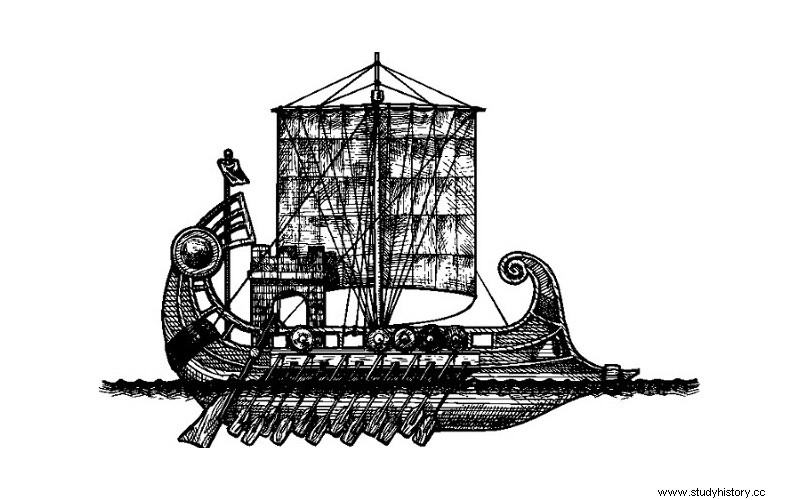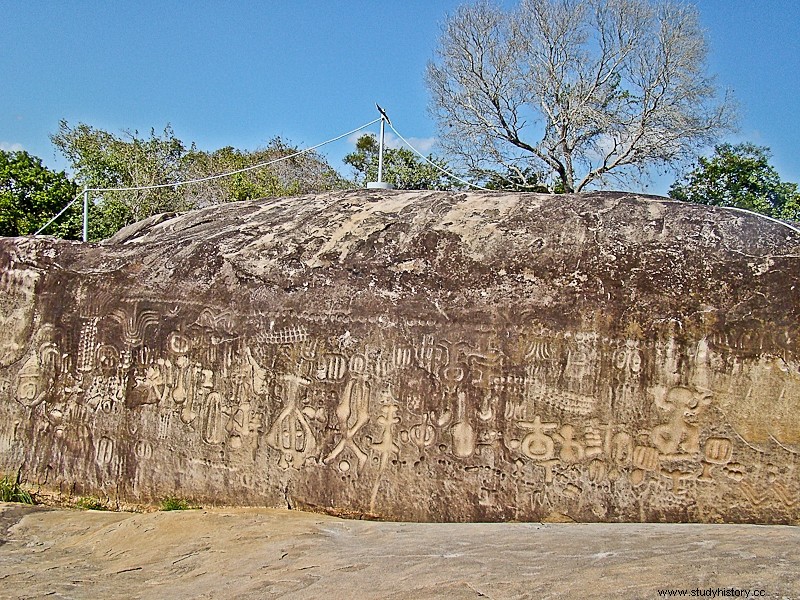
When studying Ancient Age, Phoenician civilization has a lot prominence, especially when it comes to the wars that the Romans promoted against Carthage (Punic Wars), the main city built by the Phoenicians, located in Northwest Africa. In addition, the creation of the first alphabet – the famous Phoenician inscriptions – and the intense maritime trade routes further highlight the importance of this civilization.
However, at some points in history they appear repeatedly some wild theories related to these ancient civilizations. One of them refers specifically to the Phoenicians, or rather:to evidence of the presence dos Phoenicians on Brazil . This theory is the result of a combination of factors that takes into account:ancient European legends, prior to the discovery of Brazil, and archaeological findings in Brazilian lands, which would only be satisfactorily explained from the advance of archaeological studies in the 20th century.
The European imagination before the great navigations of the 15th and 16th centuries, and the consequent discovery of the American continent, conceived a series of legends about lost civilizations and great adventures beyond the sea, that is, maritime incursions across the Atlantic Ocean, hitherto little explored. The story of the lost island of Atlantis is the most famous of these legends.
The Phoenicians were excellent maritime traders and had managed to establish routes through practically the entire Mediterranean Sea. For this reason, Europeans imagined the mythical founding of a Phoenician colony on an island in the Atlantic – there was no prospect that there could be a continent beyond the sea. This island would be part of unknown regions since the time of the flood, reported by Genesis.
After the discovery of Brazil and the colonization process, the first European scholars who made expeditions through the northeastern hinterland came across quite impressive archaeological findings, especially inscriptions and cave paintings. The most famous of these rock inscriptions are the itacoatiaras ("paintings in stone", in Tupi-Guarani) from Ingá, in the state of Paraíba.

The rock inscriptions on the rocks of Ingá, in Paraíba, indirectly contributed to the legend of the presence of the Phoenicians in Brazil.
2
According to information provided by archaeologist Gabriela Martin, in her work Pre-History of Northeast Brazil , the rock inscriptions of Ingá were “converted”, in the second half of the 19th century, into Phoenician inscriptions. This was, in part, because the great authority on archeology in Brazil at that time, Ladislau Netto, believed that this could be true. Netto had contact with an alleged transcript of Phoenician inscriptions that would have been found by someone named Joaquim Alves da Costa, in the municipality of Pouso Alto, in the Paraíba valley, and sent to the Marquês de Sapucaí, director of the IHGB (Instituto Histórico e Geográfico Brasileiro) at the time.
It is known today that the municipalities of Pouso Alto and Joaquim Alves da Costa never existed and that the supposed Phoenician inscriptions were, in fact, the itacoatiaras of Ingá, referred to above. Probably someone who knew the Marquis of Sapucaí and Ladislau Netto sent them a transcript of some Phoenician text, suggesting, in bad faith, that it had been found in rocks in Paraíba. Ladislau Netto had studied in Europe and was a student of the great archaeologist Ernest Renan, a specialist in Phoenician archeology, which gave even more credibility to the history of the presence of the Phoenicians in Brazil. However, in 1875, in an article entitled “Phenicia Inscription”, L. Netto admitted that he had been the victim of a fraud and acknowledged that there was no concrete evidence of the presence of Phoenicians in Brazil.
Also according to Gabriela Martin, another personality who contributed to the legend of the presence of the Phoenicians in Brazil was Ludwing Schwennhagen. Schwennhagen was Austrian and had an eccentric interest in cave paintings and structures from archaeological finds in Northeast Brazil. He was in Brazil in the 1910s and 1920s, teaching and traveling through the sertão. This Austrian researcher combined methods of archeology with the fantasies of ancient legends, such as the legend of the Seven Cities (a legend that emerged in the Iberian Peninsula, in the Middle Ages, around the 8th century, which was about the visit of the last king of the Visigoths to founding a civilization overseas, known as Sete Cidades) and the legend of the mythical city of Tutoia, in the Paraíba valley. In the latter, according to Schwennhagen, the Phoenicians would have united with the Trojans and built several cities, among which the most important:Tutoia.
These fanciful stories were only possible, in large part, due to the lack of sophistication of archaeological dating techniques, which would only be developed and applied here in the mid-20th century. But, as can be seen from the information above, ancient legends, motivated by the mystery generated by the immensity of the Atlantic Ocean, prior to the discovery of America, also contributed to the imaginary remaining for a long time taking the place of the most rigorous explanations.
* Image credits:
1 Shutterstock and Babich Alexander
2 Lucia Barreiros da Silva
Take the opportunity to check out our video lesson related to the subject:
